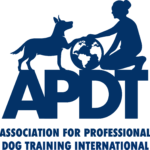August 16, 2021
Dear WSJ Editorial Staff:
After reading the editorial by Mark Naida, “I’m Disciplining My Dog, Not Torturing Her” on August 3, 2021, the Association of Professional Dog Trainers (APDT) felt it necessary to respond with our position on the inappropriate use of force when training an animal.
As a dog training association, with 4500 members we disagree with your article. We educate our dog trainers to follow LIMA, which means “Least Intrusive, Minimally Aversive.” LIMA requires trainers/consultants to work to increase the use of positive reinforcement and eliminate the use of punishment when working with animal and human clients. LIMA adherence also requires consultants to be adequately educated and skilled in order to ensure that the least intrusive and least aversive procedure is used.
Positive reinforcement should be the first line of teaching, training, and behavior change program considered, and should be applied consistently. Positive reinforcement is associated with the lowest incidence of aggression, attention seeking, avoidance, and fear in learners. Only the learner determines what may be reinforcing, which means the owner should not assume their dog is “fine” wearing a pinch or electronic collar, it hurts.
We seek to prevent the abuses and potential repercussions of inappropriate, poorly applied, and inhumane uses of punishment and of overly restrictive management and confinement strategies. The potential effects of punishment can include aggression or counter-aggression; suppressed behavior (preventing the trainer/consultant from adequately reading the animal); increased anxiety and fear; physical harm; a negative association with the owner or handler; increased unwanted behavior; and new, unwanted behaviors.
We focus on reinforcing desired behaviors, and always ask the question, “What do you want the animal to do?” Relying on punishment in training does not answer this question, and therefore offers no acceptable behavior for the animal to learn to replace the unwanted behavior. These LIMA guidelines do not justify the use of aversive methods and tools including, but not limited to, the use of electronic, choke or prong collars in lieu of other effective positive reinforcement interventions and strategies.
For these reasons, we strongly support the humane and thoughtful application of LIMA protocols, and we applaud those individuals and organizations working with animals and humans within LIMA guidelines. We would be more than happy to provide content for another WSJ article on why positive reinforcement works quicker and better than punishment methods.
Sincerely,
Mark Forrest Patrick
2021 Chair, Association of Professional Dog Trainers
*To read the original article please click on the Wall Strete Journal Op-Ed Download



